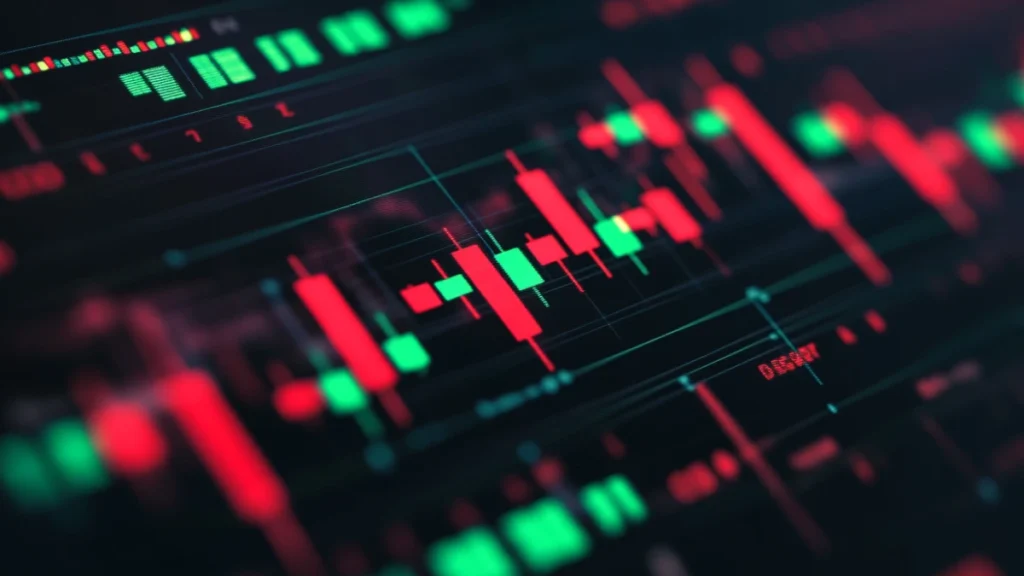Introduction
In the world of online trading, not all losses are your fault — sometimes, the real enemy is your broker.
While many traders focus on strategies, indicators, and psychology, they often overlook one of the biggest threats to their success: scam brokers. These are often unregulated forex brokers or offshore companies that appear professional but use manipulative tactics to drain your account from the inside.
From B-book setups that profit from your losses, to withdrawal delays, fake spikes, and platform glitches, shady brokers operate in ways that most beginners don’t even recognize — until it’s too late.
In this article, you’ll learn exactly how scam brokers work, the red flags to watch for, and how to protect your capital before you ever place your next trade.
How Scam Brokers Work (The B-Book Model Explained)
If you’re a beginner, you might assume all brokers are simply middlemen who connect you to the market. But that’s not always the case. In fact, some brokers are designed to profit when you fail — and they’ve built their entire business model around it.
These are known as B-book brokers — and they’re far more common than you think.
🧠 What Is a B-Book Broker?
There are two primary models brokers use:
• A-book: Your trades are passed directly to the interbank market or liquidity providers. The broker earns a small commission or spread regardless of whether you win or lose.
• B-book: Your trades are not passed to the market. The broker takes the other side — so your losses are their profits.
Now here’s the problem: B-book brokers profit from you losing. This creates a serious conflict of interest that incentivizes them to make your trading experience harder, riskier, and less fair.
🕵️♂️ How B-Book Brokers Stack the Odds Against You
Once a broker knows it will keep your trades in-house, it has full control over what you see on your trading screen. That means they can manipulate data feeds, execution speed, and even price movement.
Here are some common tactics they use:
- Stop Loss Hunting
The broker spikes price just enough to trigger your stop — even when the real market price never moved. You get taken out, and the market “magically” goes in your direction after. - Platform Freezing or Slippage
During news events or volatility, the platform freezes — just when you want to close a profitable trade. By the time it resumes, price has reversed, and your trade is in a loss. - Widening the Spread
Some brokers will dramatically widen the bid-ask spread during key moments (e.g. when you’re about to hit take profit), causing you to miss your target or even flip into a loss. - Delayed or Denied Withdrawals
With B-book brokers, you might grow an account only to find that they won’t let you withdraw profits. They’ll request unnecessary documents, delay payments, or block you entirely. - Fake News Spikes and Chart Manipulation
Because they control your price feed, some brokers insert price spikes that never existed on real market charts — purely to trigger stops or margin calls.

🔍 Why New Traders Are the Primary Targets
Scam brokers target new and undercapitalized traders because:
• They’re less likely to know how the market works
• They often over-leverage and blow accounts quickly
• They don’t know what real regulation looks like
• They can be manipulated with “bonuses” and high leverage offers
You’ll often see these brokers advertise on Instagram, YouTube, Telegram, and forums with claims like:
“Deposit $250 and earn $3,000 a month!”
“Get 1:2000 leverage and trade like the pros!”
“No verification needed. Withdraw anytime!”
These promises are not just unrealistic — they’re bait to trap beginners into accounts they can’t control.
⚠️ Real-World Example
Let’s say a trader named Sara signs up with an offshore broker offering 1:1000 leverage and a 100% deposit bonus. She deposits $500 and starts trading gold. Her trades are doing well — she grows her account to $1,400 in two weeks.
When she tries to withdraw, the broker tells her:
• She must trade 50 more lots before withdrawing
• Her “bonus” has locked the withdrawal option
• Her ID needs to be resubmitted
• Suddenly, her platform freezes during every major trade
Within days, her account is wiped. No payout. No recourse. And no real regulation to complain to.
This happens every single day — to people who just wanted to start trading with a small account and good intentions.
🛡️ Why Regulation Matters
The best protection against scam brokers is real regulation.
A properly regulated broker:
• Must segregate client funds from operational funds
• Cannot manipulate price feeds or execution
• Is audited and supervised by a governing body
• Must offer transparent withdrawal procedures
• Can be held legally accountable if they abuse clients
Look for brokers regulated by:
• FCA (UK)
• ASIC (Australia)
• CFTC/NFA (USA)
• CySEC (Europe, with caution)
If the broker is based in offshore zones like St. Vincent & the Grenadines, Belize, or Vanuatu — be extremely careful. These regions offer little to no protection for traders.
Understanding the B-book model and the tricks of unregulated brokers is essential if you want to build a long-term trading career. Even the best strategy won’t work if your broker is actively betting against you.
Red Flags: How to Spot a Shady Broker Immediately
Spotting a scam broker early can save you months of frustration — and possibly your entire trading account. While some brokers disguise themselves with sleek websites and flashy marketing, there are clear red flags that experienced traders recognize right away.
Here’s what to look for:
- ❌ No Regulation or Fake Licenses
Legit brokers proudly display their registration numbers with trusted regulatory bodies like the FCA, ASIC, or CFTC/NFA. Scam brokers either avoid mentioning regulation, or claim they’re “registered” in offshore locations like:
• St. Vincent and the Grenadines
• Seychelles
• Belize
• Vanuatu
These jurisdictions have zero real enforcement. Even worse, some shady brokers forge license numbers or display logos of real regulators without approval. Always double-check the license on the regulator’s official website.
- 🚩 Unrealistic Leverage Offers (e.g., 1:1000 or 1:2000)
High leverage might seem attractive, but it’s one of the most dangerous traps for beginners. Brokers who offer leverage above 1:500 are usually not regulated, and they know it increases the chances you’ll blow your account quickly.
Why do they want you to lose fast?
Because your losses are their profits under the B-book model.
- 🪙 Withdrawal Issues or Hidden Terms
If a broker requires excessive verification after you request a withdrawal, it’s a bad sign. Some will:
• Delay payments with “technical errors”
• Demand new documents every time
• Cancel trades retroactively
• Block accounts without warning
Check the withdrawal policy before you open an account. If it’s vague, or there are pages of fine print — walk away.
- 💬 Pushy Account Managers or Cold Calls
Legit brokers don’t chase you. Scam brokers often have aggressive “account managers” who:
• Pressure you to deposit more money
• Claim they have “inside signals” or “VIP upgrades”
• Offer to trade on your behalf (a major red flag)
• Call or message you constantly to encourage riskier behavior
This is a manipulation tactic — not customer service.
- 🎁 Too-Good-To-Be-True Bonuses or Trading Contests
Be wary of brokers who offer huge bonuses like “100% deposit match” or “bonus cash you can withdraw after 5 lots.” These offers are usually tied to unrealistic volume requirements and restrict your ability to withdraw real profits.
If your funds are “locked” due to bonus conditions, you’re no longer in control of your money.
- 📉 Platform Freezing, Price Manipulation, and Fake Spikes
Shady brokers control their own data feed. They can:
• Freeze your screen during trades
• Insert price wicks that don’t exist on other platforms
• Make it appear your stop-loss was triggered when it wasn’t in the real market
Always cross-check prices using TradingView or a regulated broker to verify price action.
- 🧪 No Real Transparency or Track Record
A reputable broker will:
• Be clear about spreads, commissions, and swap rates
• Provide access to a demo account with identical conditions
• Disclose how and where your orders are executed
If you can’t find these details on their website — or if support refuses to give straight answers — that’s a major red flag.
Final Tip: Use Broker Review Sites (But with Caution)
Websites like Forex Peace Army, Trustpilot, and MyFxBook forums can help. But be aware — some brokers pay for fake reviews. Look for patterns of real trader complaints, especially around:
• Withdrawals being denied
• Accounts being closed without reason
• Trades being reversed or altered
Where there’s smoke, there’s fire.

Final Thoughts: Protect Your Capital Before You Place a Single Trade
Scam brokers are more common than most people think — and their tactics are getting smarter every year. From fake regulation and high-leverage traps to manipulated price feeds and stolen profits, these brokers are in the business of bleeding traders dry, one account at a time.
As a trader, your first responsibility is to protect your capital — and that starts by choosing the right broker. You can master every chart pattern and build the perfect strategy, but if your broker is working against you, you’ll always be at a disadvantage.
This is just the beginning. In the next article, we’ll expose:
❗ The truth behind shady affiliate marketers, fake trading educators, and why YouTube is full of paid promotions designed to mislead you.
Stay sharp, trade smart — and always do your due diligence.
To verify your broker’s regulatory status, always check with official financial authorities like the FCA (UK) or CFTC/NFA (USA), which maintain public databases of licensed firms. These resources help you confirm whether your broker is genuinely registered or simply using fake credentials. For a deeper understanding of what prop firms look for in disciplined traders, see our full guide on how to trade consistently without blowing your funded account. You can also explore our list of top 5 funded forex prop firms in 2025 for safer trading alternatives.


1 thought on “💣 Exposing Shady Brokers: How Scam Brokers Target New Traders (And How to Protect Yourself)”